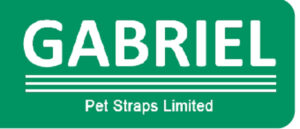- PET straps provide a cost-effective solution with a high tensile strength that often surpasses that of nylon straps, making them suitable for securing heavy loads without risk of breakage
- When it comes to post-harvest produce, it is advisable to store items secured with PET straps on pallets or racks, ensuring that heavy objects are not stacked on top of those packed using PET straps
NE BUSINESS BUREAU
AHMEDABAD, NOV 18
PET straps are widely utilized in agriculture and horticulture for the effective bundling and securing of various items, such as bales of hay, crates filled with fruits, or bags of produce. One of the key advantages of PET straps is their rust-resistant properties, which make them a reliable choice for use in outdoor environments where moisture may be a concern. Additionally, they are significantly lighter in weight compared to alternative options, making them easier to handle and transport. Furthermore, PET straps are more environmentally friendly, as they are easier to dispose of and reduce waste in comparison to traditional materials.

In terms of strength, PET straps provide a cost-effective solution with a high tensile strength that often surpasses that of nylon straps, making them suitable for securing heavy loads without risk of breakage. Another important consideration is the low environmental impact associated with PET straps, especially when taking into account their recyclability and resource-efficient production processes. Choosing recycled PET packaging straps represents a proactive step toward adopting a more sustainable and economically viable packaging procedure.
Jay Shah , Managing Director at Gabriel PET Straps Ltd said, “To ensure the longevity and effectiveness of PET straps, it is crucial to store them properly. Ideally, they should be kept in a clean indoor environment that is dry and free from direct sunlight and extreme temperatures, as these conditions can deteriorate the material over time.”
He further added “Additionally, it is important to prevent exposure to harsh chemicals, which can compromise the integrity of the straps, and to maintain proper ventilation in the storage area to avoid moisture accumulation that could lead to mold or degradation”.
When it comes to post-harvest produce, it is advisable to store items secured with PET straps on pallets or racks, ensuring that heavy objects are not stacked on top of those packed using PET straps. This will help maintain the packaging’s integrity and protect the contents from damage. Regular inspections for any signs of damage are essential; when cleaning is necessary, use a mild detergent to avoid harming the straps. Handling the straps with care during both storage and application will further extend their usability.
Importantly, avoid over-tensioning the straps during the strapping process, as this can lead to material fatigue or breakage. Always follow the manufacturer’s guidelines for tool maintenance and usage. If any straps are found to be damaged or compromised, they should be replaced immediately to uphold the overall integrity and effectiveness of the packaging. By adhering to these practices, the benefits of using recycled PET straps can be maximized while ensuring safe storage and handling of agricultural and horticultural products.









